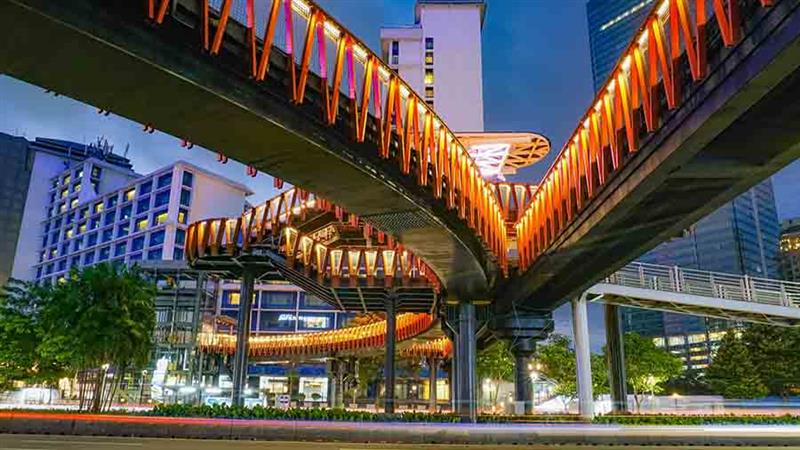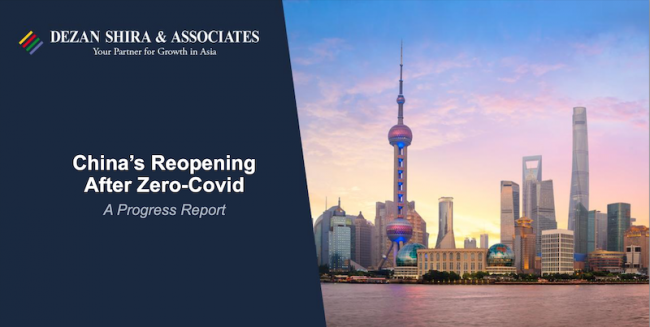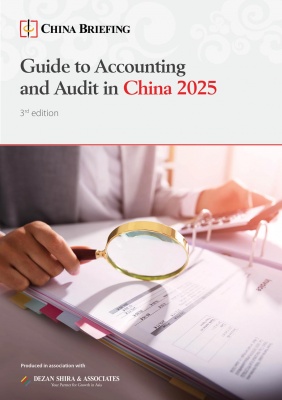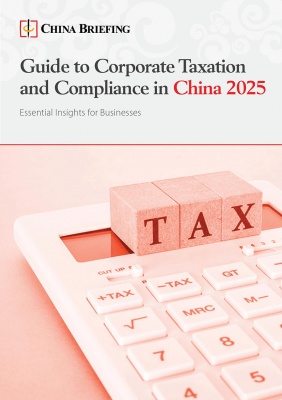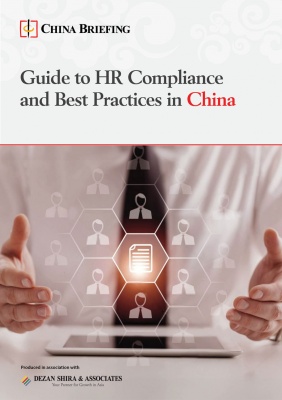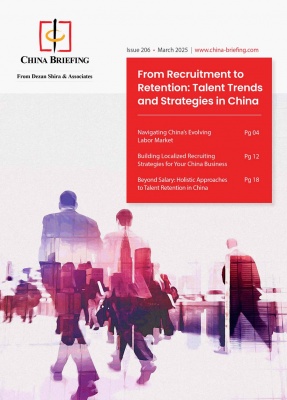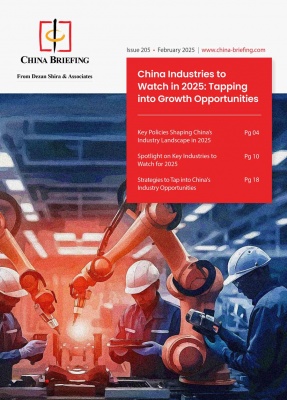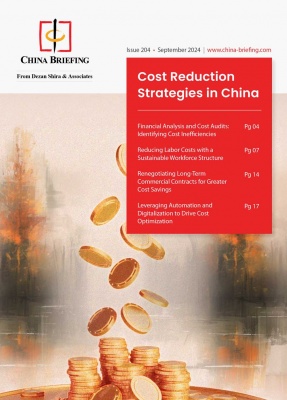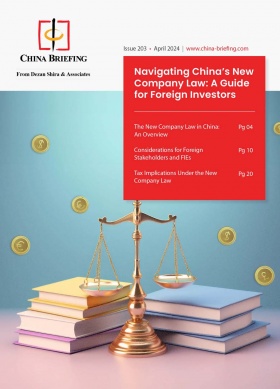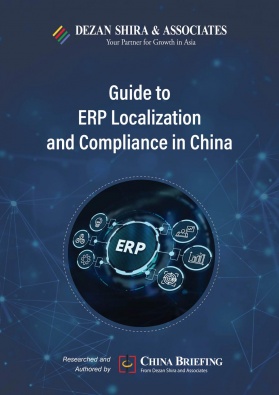China’s New Action Plan to Boost Urbanization
A new five-year action plan seeks to boost urbanization in China by implementing a series of policies to facilitate the settlement of rural migrants in cities. The plan includes further reforming the household registration system, providing more opportunities for migrants in areas of work, education, and vocational training, and improving urban planning and services infrastructure. We look at China’s history of promoting urbanization and discuss how the new plan proposes to facilitate migration to urban areas.
On July 28, the State Council released the Five-Year Action Plan for Deeply Implementing the People-oriented New Urbanization Strategy (the “Action Plan”), a new policy document to boost the country’s urbanization rates. This plan builds on China’s significant urbanization progress over the past few decades, which has seen a rapid increase in the urban population, but now faces challenges such as slowing growth rates and the need for deeper integration of rural migrants into urban areas.
The Action Plan sets forth a comprehensive framework to address these challenges, focusing on reforming the household registration system, enhancing housing and social security for migrant workers, and improving infrastructure and public services in urban areas to accommodate the growing population. By doing so, the plan seeks to narrow the gap between urban and rural populations, promote balanced regional development, and foster the creation of modern metropolitan areas across the country.
Urbanization continues to be an important driver of economic growth in China, as well as one of the main means for individuals and families to improve their prospects in life. As such, plans to boost urbanization not only aim at administrative reform and infrastructural development but are also important strategies for long-term economic growth and social progress.
Background: Urbanization in China
China has undergone rapid urbanization in the decades since the implementation of reform and opening-up policies in the 1980s. According to the National Bureau of Statistics, between 1978 and 2000, China’s urbanization rate grew at an average of 0.8 percentage points per year, increasing from 17.9 percent to 36.2 percent. Since the millennium, this rate has further accelerated on the back of the rapidly expanding services sector, growing by 1.3 percentage points annually to reach 58.5 percent in 2017.
The rate of urbanization in China reached 66.16 percent in 2023, surpassing the target set in the 14th Five-Year Plan (2021 to 2025). Urbanization during this period has slowed compared to previous decades, growing at an average of 0.76 percentage points per year between 2021 and 2023.
In a media interview, Zheng Bei, Deputy Director of the National Development and Reform Commission (NDRC) highlighted that there are still a large number of households in China that rely on rural and agricultural work. Currently, 169 million people are employed in the primary sector, accounting for 22.8 percent of China’s total employment.
However, the average salary of an urban worker is 2.39 times higher than that of a rural worker, which continues to drive people to search for work in cities. According to Zheng, this means there is still significant potential for further urbanization, and the urbanization rate is expected to reach nearly 70 percent in the next five years.
Hukou system reform
One of the major hindrances to urbanization in China has been the implementation of the household registration system, better known as the hukou or huji system (户籍制度). The hukou is a system by which individuals must register as permanent residents in a given jurisdiction in order to legally work and access public services. This includes access to public education for their children.
However, strict rules governing the system have made it difficult for people to change their hukou when they move to a new jurisdiction, significantly limiting mobility and leading to a surge in the so-called “floating population” – people who live outside their places of residence for long periods (often referred to as migrant workers). According to the NBS, between 2010 and 2014, the floating population grew by an average of 8 million per year to reach 253 million, accounting for 18.5 percent of China’s total population.
A series of reforms to the hukou system have sought to address some of these issues and facilitate mobility for citizens. Among the more recent reforms was the Opinions of the State Council on Further Promoting the Reform of the Household Registration System (the “Opinions”), released in 2014, which called for establishing a new household registration system and settling around 100 million agricultural migrant workers and other permanent residents in cities and towns by 2020.
The Opinions called for relaxing restrictions on settlement in established cities and towns of various sizes, allowing people who have legal and stable residences (including rentals) in county-level cities and townships to apply for permanent residence along with their spouses, minor children, and parents who live with them. However, in order to encourage migration to smaller cities and towns, requirements for household registration in larger cities remained stricter.
In 2022, the NDRC released the Implementation Plan for New Urbanization in the 14th Five-Year Plan (the “implementation plan”). This plan set out tasks for increasing the urbanization rate of the registered population and narrowing the gap between the rates of urbanization and urban registration by 2025. In 2022, the urban household registration rate was 47.7 percent, far below the 65.22 percent general urbanization rate.
The implementation plan set out various measures to further reform the hukou system, including relaxing restrictions on settlement (except in a few megacities), scrapping restrictions on settlement in cities with a permanent urban population of less than 3 million, and relaxing settlement conditions for cities with a permanent urban population of 3 to 5 million. It also called for improving the point-based settlement policy for cities with a permanent urban population of more than 5 million and encouraging the cancellation of annual settlement quotas.
New reforms to promote urbanization
The new Action Plan to boost urbanization builds upon many of the previous reforms to both the hukou system and policies to incentivize migration to urban areas. In addition to the incentive measures themselves, the Action Plan also lays out policies to improve urban housing, infrastructure, and public services to ensure cities and towns can properly accommodate the expanding populations.
The Action Plan lays out several measures aimed at further narrowing the gap between urban registration and urbanization rates and improving the opportunities and rights of migrant workers and their families. This includes enabling eligible rural migrants to enjoy the same rights as registered permanent residents in areas such as social insurance, housing security, and compulsory education for accompanying children.
Deepening reform of the hukou system
Among the key tasks outlined in the Action Plan are reforms to the hukou system, which will make it easier for migrant workers to settle in urban areas with their dependents. As with previous reform measures, the Action Plan outlines varying levels of loosening restrictions depending on the size of the city or town in question.
The specific measures are as follows:
- Loosening restrictions on settlement (except in a few megacities) and promoting the household registration system based on the place of habitual residence.
- Fully canceling settlement restrictions in cities with a permanent urban population of less than 3 million, and fully relaxing settlement conditions in cities with a permanent urban population of 3 to 5 million.
- Improving the point-based settlement policy for megacities with a permanent urban population of more than 5 million, and encouraging the cancellation of annual settlement quota restrictions.
- Encouraging cities to formulate specific settlement measures to promote the settlement of rural migrant workers that have stable employment and are living in cities and towns, and ensuring they enjoy the same rights and fulfill the same obligations as urban residents.
- Improving the national open and unified household registration management government service platform to streamline household registration and migration.
Improving urban employment opportunities and rights of migrant workers
In addition to loosening restrictions on household registration, the Action Plan seeks to promote stable employment of rural migrant workers in urban areas. It focuses in large part on improving vocational education and technical training, in particular for in-demand fields such as manufacturing and intelligent manufacturing, as well as labor-scarce industries such as domestic services.
Another important measure proposed is guaranteeing the right of migrant children to receive education in the jurisdiction they have moved to by including them in the scope of compulsory education, increasing the supply of public school places, and increasing the proportion of migrant children in public schools.
The Action Plan aims to enhance housing security and social security for the migrant population by gradually integrating rural migrant workers with stable employment into urban housing policies. This involves increasing the availability of small, affordable rental housing and fostering the housing rental market to meet their needs through market-driven solutions. The plan also seeks to equalize public service rights for renters and buyers and promote affordable housing construction in suitable cities.
In terms of social security, the plan expands coverage for migrant workers by removing household registration barriers, encouraging participation in pension and medical insurance, and improving policies for social security continuity. It also includes rural migrant workers in social assistance programs to ensure basic living standards, particularly for vulnerable groups, and deepens protection for those in new forms of employment.
The specific policy measures to boost urbanization among the rural migrant population outlined in the Action Plan focus on several key areas. The plan enhances incentives for the urbanization of rural migrants by linking fiscal transfers and resource allocation to the process of integrating these populations into cities. It improves the central government’s financial rewards for urbanizing rural migrants and encourages provinces with net population inflows to establish similar reward mechanisms. The plan also prioritizes the allocation of construction funds and land for schools, affordable housing, and other essential services in cities with high numbers of rural migrants.
Additionally, the plan safeguards the rural property rights of migrants who settle in cities, ensuring they retain their land contract rights, homestead usage rights, and collective income distribution rights. It prohibits making the relinquishment of these rights a condition for urban settlement and explores voluntary, compensated exit mechanisms for those who choose to give them up.
Policies to improve urban planning and infrastructure
The other side of the urbanization drive seeks to ensure the balanced development of urban areas and improve the infrastructure and services within cities to better accommodate new residents and migrant workers. One strategy to ensure balanced urbanization outlined in the Action Plan is to focus on developing areas with high urbanization potential, such as Central and Southern Hebei, Northern Anhui, Southwestern Shandong, Southeastern Henan, Southwestern Hunan, Western Guangdong, and Eastern Sichuan, among others. By developing less densely populated areas and encouraging migration to emerging urbanizations, the government hopes to alleviate pressure on large metropolises and more balanced economic development across different regions.
Moreover, the Action Plan seeks to boost the comprehensive capacity of towns and cities by developing provincial sub-centers to alleviate pressure on capital cities, improving infrastructure and public services in county towns, and promoting urbanization in larger central towns to facilitate the migration of agricultural populations. The plan also encourages the transformation of areas with declining populations by concentrating resources and services, and it advances rural-urban integration by extending urban infrastructure and services to rural areas.
The Action Plan also seeks to boost the growth of areas surrounding megacities through measures such as improving transportation networks to improve intercity commuting efficiency. It also emphasizes industrial collaboration by encouraging mega-cities to focus on core functions while transferring non-core activities to surrounding smaller cities, creating a hierarchical and integrated industrial structure.
Additionally, the plan seeks to accelerate market integration by standardizing business entry procedures, enhancing regulatory coordination, and integrating resource markets across the metropolitan area. Public services are to be shared and developed jointly, with efforts to decentralize concentrated resources like education and healthcare, support cross-city collaborations, and streamline administrative processes. The policy framework includes a coordinated approach to urban planning and project implementation, with financial support from local government bonds and inclusion in provincial project lists for key urban initiatives.
Urbanization as a driver of economic growth and social mobility
Urbanization has been a critical driver of China’s economic transformation, contributing significantly to GDP growth, enhancing social mobility, and improving the overall quality of life for millions of residents. According to the NDRC, each 1 percentage point increase in China’s urbanization rate generates over RMB 200 billion (US$28 billion) in new consumer demand annually. Additionally, urbanization stimulates substantial investment in municipal infrastructure, public services, and housing, with the potential to create trillions of yuan in new investment demand.
This surge in consumption and investment plays a vital role in expanding domestic demand, which, in turn, promotes stable economic growth, enhances the quality of development, and continuously improves the livelihoods of the population. However, to sustain these benefits, the country must continue to address the challenges associated with rapid urbanization, such as social inequality and environmental sustainability. The Action Plan is therefore not only a strategy for addressing the challenges of urbanization but also a crucial measure for sustaining China’s economic momentum and ensuring that urbanization remains a positive force for the country’s future development.
About Us
China Briefing is one of five regional Asia Briefing publications, supported by Dezan Shira & Associates. For a complimentary subscription to China Briefing’s content products, please click here.
Dezan Shira & Associates assists foreign investors into China and has done so since 1992 through offices in Beijing, Tianjin, Dalian, Qingdao, Shanghai, Hangzhou, Ningbo, Suzhou, Guangzhou, Haikou, Zhongshan, Shenzhen, and Hong Kong. We also have offices in Vietnam, Indonesia, Singapore, United States, Germany, Italy, India, and Dubai (UAE) and partner firms assisting foreign investors in The Philippines, Malaysia, Thailand, Bangladesh, and Australia. For assistance in China, please contact the firm at china@dezshira.com or visit our website at www.dezshira.com.
- Previous Article China’s New Guidelines to Boost Services Consumption Ignite Optimism in Education and Training Sector
- Next Article Rückführung von Gewinnen aus China





